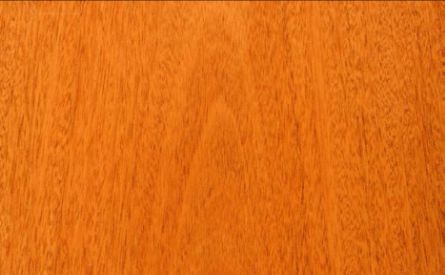BIG-LEAF MAHOGANY
Caoba / Swietenia macrophylla

Local Names
Honduras Mahogany, Genuine Mahogany, Caoba del Atlántico
Source & Tree
Mahogany’s English name derives from the Brazilian indigenous word mogno. Big-leaf or genuine mahogany is widely distributed from southern Mexico through Central America and the majority of the Amazon. The closely related Pacific mahogany (Swietenia humilis) predominates on the western coast of Central America while Cuban mahogany (Swietenia mahogani) is found on the larger Caribbean islands (although now is highly endangered). The tree attains heights up to 50 meters and diameters of 2 meters with heavy buttresses with clear boles up to 20 meters. The species is normally dispersed in forests typically with no more than 4 to 8 trees per hectare. This is partly an adaptation to the threat of the shoot-borer moth which specifically attacks mahogany, cedar and other members of the Meliaceae family by entering young trees’ apex, causing bifurcation and, less frequently, mortality. Some researchers believe mahogany is widely distributed in Mexico and Bolivia because hurricanes and floods have allowed the species to prosper by opening large swaths of forest for regeneration. However, following centuries of over-exploitation, it is threatened and listed on CITES Appendix II.
Wood Appearance
The heartwood is rosy brown, pinkish, salmon-colored to light red. It deepens over time to red or brown with a distinct yellowish sapwood. The grain is straight to slightly interwoven or curly with a fine to medium texture. Luster is high and golden often with an attractive figure.
Processing Properties
Mahogany is highly regarded by woodworkers as very easy to mill and plane with hand and machine tools. It’s easy to finish and takes an excellent polish. It can be easily sliced and peeling into fine veneer. It’s a moderately dense wood.
Strength & Durability
The heartwood is durable in resistance to a brown-rot and white-rot fungus and moderately resistant to dry-wood termites. It shows little resistance to attack by marine borers.
Wood Uses
Fine furniture and joinery for interior and exterior use. Veneers, moldings, turned and arched goods. Furniture with turnery, carvings, and curvature. Interior carpentry including claddings, overlays, molding, skirting boards, wood-ware and friezes. Doors and windows for exterior use. Decorative veneers and paneling. Naval construction. Musical instruments.
Historical Uses
In the sixteenth century, the Spanish discovered that mahogany was a superior wood for shipbuilding. It withstood decay in tropical waters and had the advantage of not splintering when struck by cannonballs, without splintering and wounding sailors with wooden shrapnel. When the English defeated the Spanish Armada in the sixteenth century, they seized the Spanish fleet, constructed mainly from mahogany.
| Reference Species | ||||
| Technical Characteristics | Big-Leaf Mahogany | Teak | American Elm | |
| Density | kg/m3 | 560 | 624 | 560 |
| Janka Hardness | kgf | 456 | 500 | 376 |
| Bending Stiffness (Modulus of Elasticity) | GPa | 10.1 | 13.7 | 9.2 |
| Bending Strength (Modulus of Rupture) | MPa | 80.8 | 97.1 | 81.4 |
| Crushing Strength | MPa | 46.6 | 54.8 | 38.1 |
| Shrinkage, Radial | % | 2.9% | 2.6% | 4.2% |
| Shrinkage, Tangential | % | 4.3% | 5.3% | 9.5% |
| Shrinkage, Volumetric | % | 7.5% | 7.2% | 14.6% |
| T/R Ratio | 1.5 | 2.0 | 2.3 | |
| Values determined at 12% humidity | ||||
|---|---|---|---|---|
DENSITY
JANKA HARDNESS
BENDING STIFFNESS
BENDING STRENGTH
CRUSHING STRENGTH
SHRINKAGE
Values are for reference only and cannot be guaranteed. Wood is a natural material and physical and mechanical properties may vary depending on age, genetics, and other factors. We encourage customers to consult the references provided in the bibliography. For further explanations of wood’s key technical characteristics, an excellent resource is the Wood Database with articles on Density (average dried weight); Janka hardness; Elastic Modulus; Rupture Modulus; Crushing Strength; Radial, Tangential and Volumetric Shrinkage.






